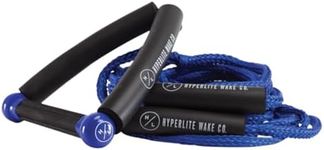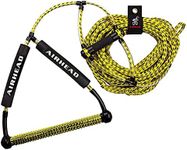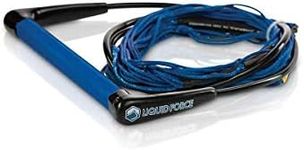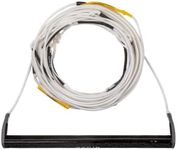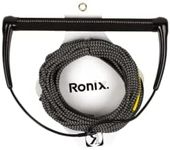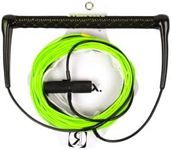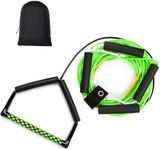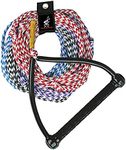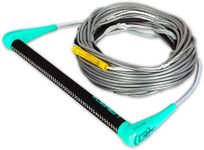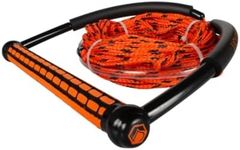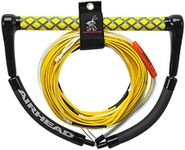Buying Guide for the Best Wakeboard Ropes
Choosing the right wakeboard rope is crucial for an enjoyable and safe wakeboarding experience. The right rope can make a significant difference in your performance and comfort on the water. When selecting a wakeboard rope, consider the material, length, handle, and stretch properties. Each of these factors can affect your ride, so it's important to understand what to look for and how to match the rope to your skill level and riding style.MaterialThe material of the wakeboard rope is important because it affects the rope's durability, weight, and stretch. Common materials include polyethylene, which is affordable and has some stretch, and spectra or dyneema, which are more expensive but offer minimal stretch and high strength. If you are a beginner, a polyethylene rope might be sufficient, but as you progress, you may want to invest in a spectra or dyneema rope for better performance and longevity.
LengthThe length of the wakeboard rope can influence your ability to perform tricks and the wake's shape. Ropes typically range from 55 to 75 feet. Shorter ropes (55-65 feet) are better for beginners as they keep the rider closer to the boat and the wake is narrower, making it easier to jump. Intermediate and advanced riders may prefer longer ropes (65-75 feet) to allow for more space to perform tricks and to ride on the larger part of the wake. Choose a length that matches your skill level and the type of wakeboarding you plan to do.
HandleThe handle of the wakeboard rope is where you grip, so comfort and grip are key. Handles come in various shapes, sizes, and materials. Look for a handle with a comfortable grip that fits your hands well. Some handles have padded grips or ergonomic designs to reduce hand fatigue. The width of the handle can also vary, with wider handles providing more stability for tricks. Consider your hand size and the type of riding you do when selecting a handle.
StretchThe stretch of the wakeboard rope affects the responsiveness and control you have while riding. Low-stretch or no-stretch ropes, like those made from spectra or dyneema, provide a more consistent pull and better control, which is ideal for performing tricks and advanced maneuvers. High-stretch ropes, often made from polyethylene, can absorb some of the pull, making them more forgiving for beginners. Determine your skill level and riding style to choose the appropriate stretch level for your rope.
